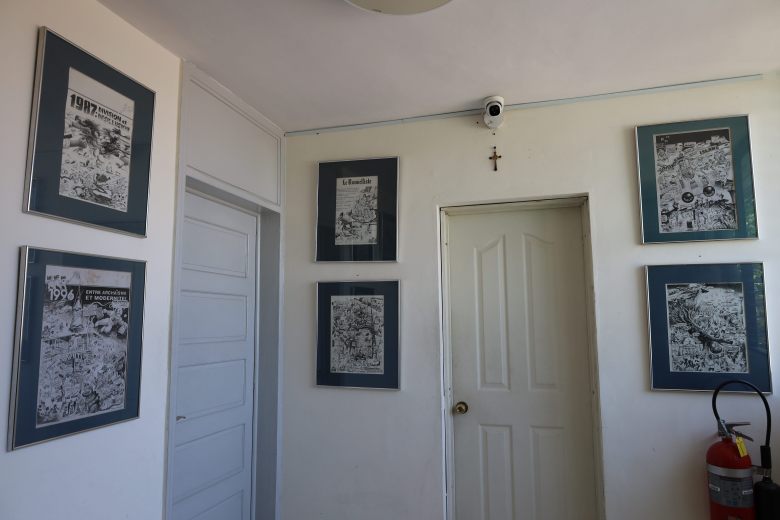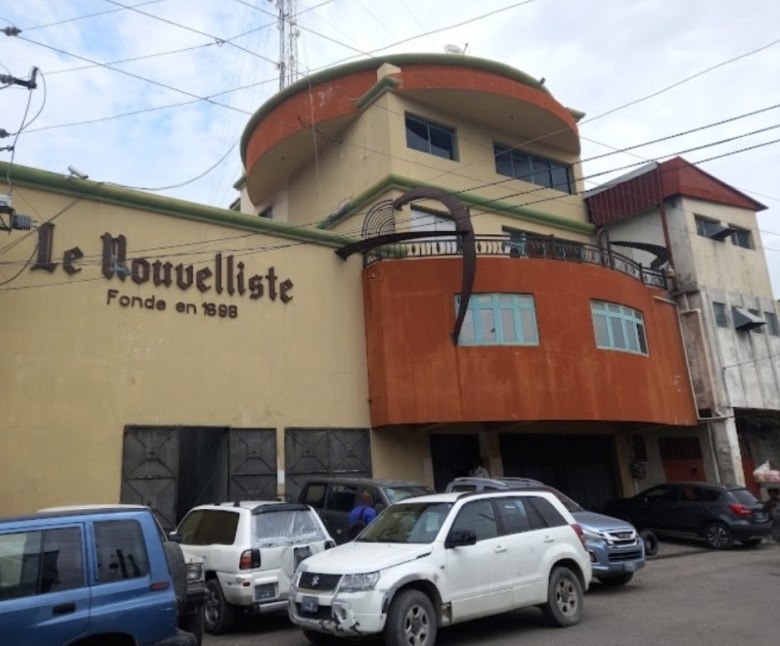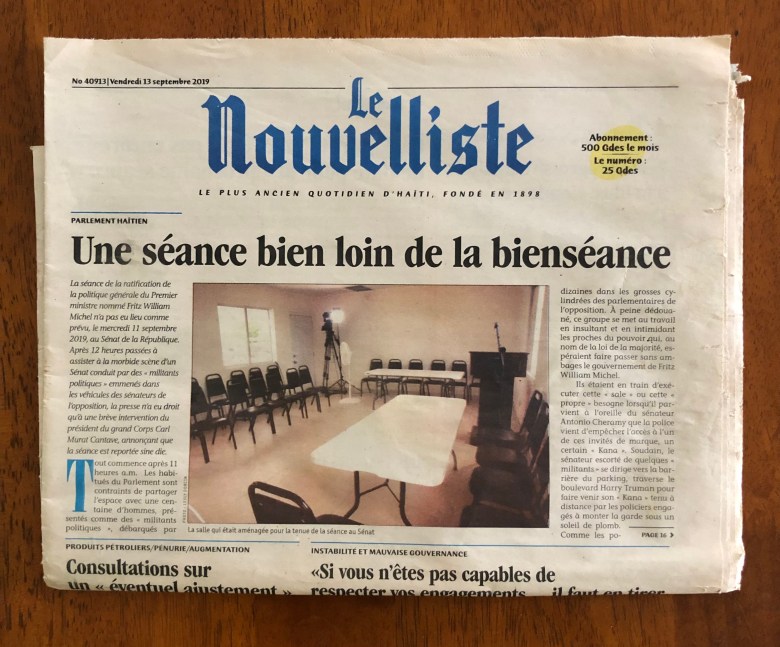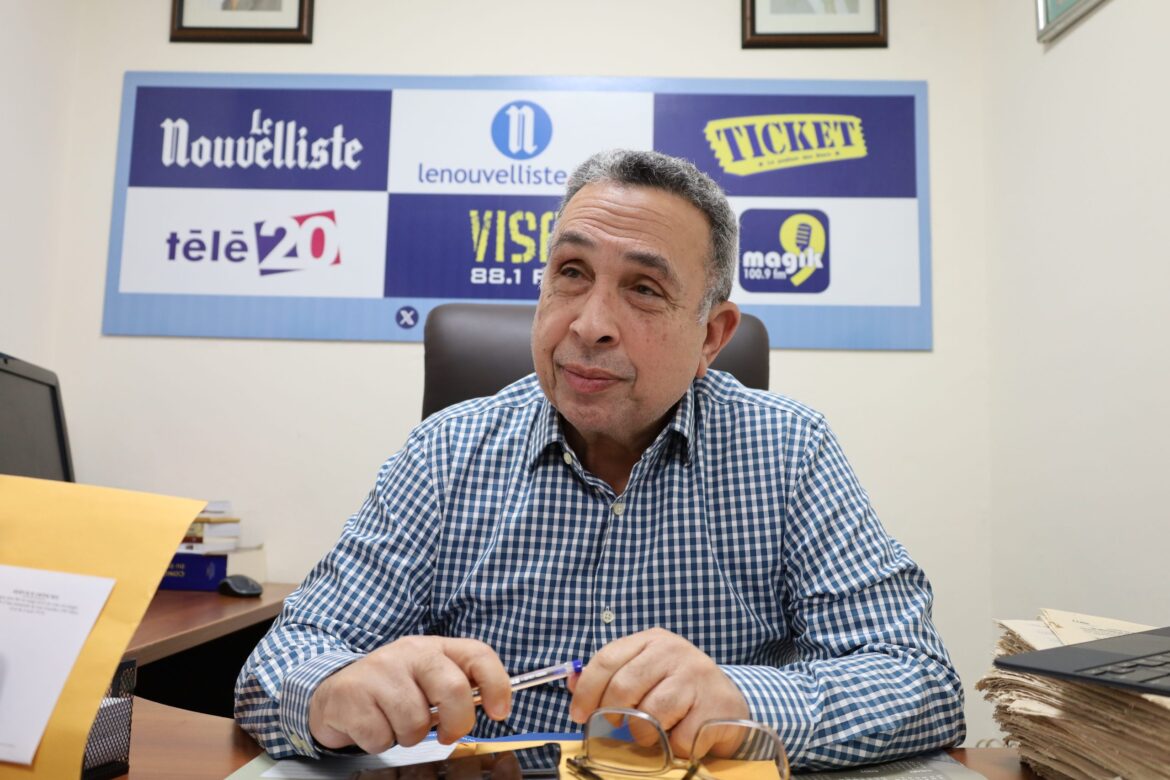Overview:
Following a gang assault in April 2024 that destroyed its printing gear and compelled the suspension of its print version, Le Nouvelliste — Haiti’s oldest day by day — has relocated to Pétion-Ville and embraced a digital-first technique. Beneath Max E. Chauvet’s management, the paper stays dedicated to its values of independence, steadiness, and public service. Confronted with declining subscriptions and insecurity, it now bets on paid digital content material to make sure its survival whereas preserving its journalistic legacy.
PORT-AU-PRINCE — After suspending its print version resulting from escalating insecurity, Le Nouvelliste has as soon as once more reinvented itself—this time as a digital-first publication. Now centered on strengthening its on-line presence, the newspaper is striving to retain a shrinking subscriber base important to its longevity, all whereas upholding its mission of steadiness and objectivity.
Haiti’s oldest day by day paper now operates out of latest workplaces in Pétion-Ville after fleeing a gang assault on its former headquarters on Rue de l’Enterrement in Port-au-Prince. Regardless of these challenges, Le Nouvelliste, now gleaning day by day information below Editor-in-Chief Frantz Duval’s management, continues to say its position because the dean of the nationwide press.
Calm and approachable in a blue-and-white checkered shirt, Max E. Chauvet displays on the newspaper’s evolution since taking the helm in 1973, shortly after getting back from overseas. He speaks with evident pleasure concerning the paper’s enduring legacy.
“I don’t need the newspaper to cease functioning below my route. I go away this resolution within the arms of the subsequent technology,” Chauvet stated with a smile throughout an interview with The Haitian Instances.
A ardour for info and repair to the Haitian neighborhood
Le Nouvelliste’s origins hint again to Might 1, 1898, when Guillaume Chéraquite based Le Matin, a newspaper printed on the press of Henri Chauvet, a author, Port-au-Prince parliamentarian and great-grandfather of Max E. Chauvet. When Le Matin folded in April 1899 resulting from monetary hardship, the 2 males determined to launch a brand new publication. On Aug. 1, 1899, Le Nouvelliste was born — thought-about a continuation of Le Matin, although it retained Might 1 as its symbolic anniversary.
“At the moment, there have been many newspapers, however all have been tied to political events,” Chauvet explains. “The 2 founders wished to create a business paper, supported by subscribers and open to all sectors.”
From the start, Le Nouvelliste aimed to be impartial — neither aligned nor opposed — however rooted in service to the neighborhood. That guiding philosophy laid the muse for its editorial independence and position as a platform for public dialogue.
Chéraquite served as director-owner, whereas Henri Chauvet, a person of letters, grew to become editor-in-chief and later, in 1909, a full accomplice. That very same yr, he acquired the paper completely and handed it on to his son, Ernest Georges Chauvet, in January 1919. And the newspaper has been owned by the Chauvet household since then. An expert journalist, Ernest—Max’s grandfather, turned Le Nouvelliste right into a family-owned establishment that has endured for over a century regardless of quite a few trials.
To today, readers acknowledge and worth the newspaper’s dedication to public service, viewing Le Nouvelliste as an important supply for staying knowledgeable and socially engaged.
“It supplies dependable, well timed information and shares considerate evaluation and reflections from numerous specialists, all whereas sustaining a transparent editorial line,” says Paul Aimable, a longtime reader. For him, the paper has earned the general public’s belief by way of its enduring popularity.
Ashley Jean Baptiste, an legal professional with the Mirebalais bar affiliation, additionally commends the outlet’s rigorous fact-checking and editorial requirements.
“I grew to become an everyday reader of Le Nouvelliste in 2012, however I used to be already looking some articles in 2008, and also you’ve by no means heard of it spreading disinformation,” he says. “Le Nouvelliste is a media outlet that retains evolving, transitioning from print to digital with the identical professionalism.”
A legacy of generations and resilience by way of turbulent occasions
After the dying of Ernest Georges Chauvet, management of Le Nouvelliste handed to his sons, Max Chauvet Sr. and Pierre Chauvet — the third technology to information the newspaper.
Pierre later pivoted to the tourism sector, founding his journey company, Citadelle, whereas administration of the paper fell to Jeanine Chauvet, Max Sr.’s widow. When Max E. Chauvet returned to Haiti after finishing his research, he assumed basic administration of the paper in 1973, ushering within the fourth technology of household management.
“To outlive, you could owe nothing to anybody. We’ve had many presents — typically disguised as assist to improve our gear — however we all the time stated no.”
Max E. Chauvet, Proprietor and Director of Le Nouvelliste
Via a long time of political unrest and financial instability, Le Nouvelliste weathered many storms. Max Chauvet remembers that the one time the newspaper ever ceased publication was throughout the U.S. occupation of Haiti. His grandfather was arrested and jailed twice for publishing articles opposing the American presence within the nation.
Beneath the Duvalier dictatorship, the paper adopted a cautious posture to make sure its survival, usually steering away from political confrontation.
“My elders selected to stay discreet and really impartial,” Chauvet says. “On the time, the paper centered totally on native incidents and worldwide information.”

Longevity pushed by independence and flexibility
Le Nouvelliste has lengthy stood as a pillar of Haitian journalism, thanks partly to its legacy of unbiased thought and its skill to evolve with the occasions. Throughout generations, influential voices have helped form its position within the nationwide media panorama.
In its early years, Haitian journalism was deeply influenced by the interaction of literature and politics. Many early contributors have been intellectuals actively engaged in public life, usually sustaining shut ties to the political institution. The paper’s founder, Guillaume Chéraquite — himself a former deputy — exemplifies that dynamic.
The primary government council of Le Nouvelliste, established in 1920, mirrored this intellectual-political mix. It included Ernest Georges Chauvet, Frédéric Duvigneaud and poet Léon Laleau — all of whom would go on to carry vital authorities positions.
Immediately, Le Nouvelliste’s longevity continues to encourage each respect and curiosity. One query surfaces many times: What’s the secret to its survival?
Whereas different historic Haitian dailies like Le Matin, based by outstanding literary author Clément Magloire in 1907, and Le Nouveau Monde, established in 1958 by former Cap-Haïtien parliamentarian and Haitian Ambassador to the U.S. Luc Fouché, have disappeared, Le Nationwide—established in 2015 as a more moderen entrant— shortly deserted its print version early to develop into absolutely digital. In distinction, Le Nouvelliste endures.
In accordance with Max E. Chauvet, the paper’s present proprietor and director, there is no such thing as a magic method. He attributes the continued existence of the day by day—censored throughout each the U.S. army occupation of Haiti and the Duvalier dictatorship—to a guiding philosophy handed down by way of generations, one rooted in steadiness, objectivity and editorial integrity.
“It’s about the way you current the information,” Chauvet says. “We’ve averted extremes and tailored to altering occasions.”
Survival, he provides, additionally requires independence.
“To outlive, you could owe nothing to anybody. We’ve had many presents, typically disguised as assist to improve our gear, however we all the time stated no,” Chauvet explains, recalling comparable conditions below the Duvalier regime.
“In Haiti, survival means fixed self-reflection, adaptability, and staying alert to your environment,” stated Max E. Chauvet.

When Chauvet assumed management of Le Nouvelliste in 1973, the newspaper entered a brand new period. Regardless of enduring wave after wave of political, financial, and social upheaval, the paper pressed on, guided by improvements that helped it modernize and develop.
A shift from black-and-white to paint printing marked a turning level. With a brand new rotary press and upgraded manufacturing capabilities, the paper expanded from 24 to 32 pages, half of which have been in colour. These advances allowed for quicker printing, larger quantity, and extra visually partaking layouts.
The paper additionally broadened its editorial scope, evolving right into a full-fledged day by day with devoted sections on information, the financial system and tradition to have interaction a wider readership.
For Joram Moncher, an editor with greater than 12 years on the paper, Le Nouvelliste’s resilience is rooted in a core set of values: professionalism, creativity, self-discipline, impartiality and inclusion.
“This chance helped me each professionally and socially. It’s a narrative of success,” stated Moncher, who relies in Belladère.
“Working right here calls for self-discipline and dedication. One should characterize the establishment with dignity,” added Michel Césaire, a journalist since 2014. “It’s an honor to see my identify within the oldest newspaper within the nation.”
Césaire, who covers judicial affairs, stated he’s constantly impressed by the publication’s skill to endure — a testomony, he believes, to its deep dedication to serve, inform and educate.
Hit laborious by insecurity, Le Nouvelliste nonetheless stands
On April 25, 2024, Le Nouvelliste’s administration introduced that its workplaces had been vandalized. The assault pressured the suspension of its print version — a multimillion-dollar funding made after the 2010 earthquake. The attackers dismantled and stole a 40-meter-long printing unit, the centerpiece of the paper’s manufacturing.
But, insecurity had been eroding the paper lengthy earlier than the break-in. With each neighborhood that fell below gang management, the variety of subscribers declined.
“In Carrefour, Martissant, La Plaine, and components of Delmas, we now not ship the paper,” stated Chauvet. “We went from 15,000 subscribers to round 3,000.”
With the print version halted, subscription income, as soon as a core pillar of the newspaper’s monetary mannequin, disappeared.
“Immediately, we’re like a radio station,” Chauvet added. “What used to make us robust have been subscriptions and promoting.”

The assault struck a heavy emotional chord among the many workers. For editor Joram Moncher, it felt just like the collapse of greater than only a constructing — it was the lack of collective reminiscence.
“To see that after 125 years, a number of disoriented people destroyed the premises of the nation’s oldest newspaper — it was painful,” he stated.
“Le Nouvelliste is a pillar. It should stay the reminiscence of a struggling nation,” stated Michel Césaire, who additionally lamented the lack of journalistic solidarity within the face of rising insecurity.
“We now need to keep away from sure areas for our personal security,” he added.
Le Nouvelliste appears to the longer term with paid digital content material
As print readership continues to say no, Le Nouvelliste is embracing a extra strong digital mannequin. With audiences more and more turning to cell phones, tablets, and computer systems for information, the paper is adapting to fulfill readers the place they’re.
The surge in insecurity has solely bolstered this shift. For Max E. Chauvet, the transition have to be mobile-first. His imaginative and prescient is to develop a paid digital platform providing unique content material — together with audio and video — that can not be discovered elsewhere. For now, the positioning stays free to entry.
Globally, print is below strain — squeezed by rising manufacturing prices and competitors from FM radio and digital media. Whereas Le Nouvelliste reinvents itself to remain related, the decline in promoting income stays a urgent concern.
“Promoting that was unfold throughout ten retailers is now shared throughout ten occasions extra,” Chauvet notes.
Nonetheless, the paper retains a robust digital footprint: a complete web site, the Ticket journal, and lively social media channels. This digital infrastructure is now central to Le Nouvelliste’s technique for the longer term; one which should evolve with out abandoning the ideas which have guided it for over a century.
“I’ve no alternative however to see the newspaper not simply as a newspaper, however as a multimedia product,” Chauvet says.

Urgent challenges throughout Haiti’s broader media panorama
Le Nouvelliste’s digital pivot comes at a time when Haiti’s media ecosystem is present process speedy transformation amid deepening insecurity and political instability. Whereas the nation boasts a strong media custom courting again to the nineteenth century, right this moment’s panorama is fragmented and threatened.
Media possession in Haiti is predominantly family-run or privately held, with few conglomerates and just about no vital state-owned press apart from Télévision Nationale d’Haïti (TNH) and Radio Nationale d’Haiti (RNH), each established in 1979 below the Duvalier regime. Haiti’s gazette, Le Moniteur, was based in 1845 to handle the federal government’s official and administrative communications.
For the reason that 2000s, nevertheless, an growing variety of unbiased digital retailers like AyiboPost—some operated by citizen journalists or diaspora-supported initiatives—have emerged to handle the hole left by shuttered or financially struggling print, radio and TV retailers.
Traditionally, radio has been the first medium in Haiti, with practically 700 stations making up over 70 p.c of the nation’s media consumption. There are roughly 40 tv stations nationwide. Print circulation has sharply decreased because the 2010 earthquake, and digital media now represents an growing share of reports entry—particularly amongst youth and concrete populations with cell web entry.
However journalists function below fixed threat. In accordance with UNESCO, as reported by AP, not less than 21 journalists have been killed from 2000 to 2022 in Haiti, with 9 killed in 2022, the deadliest yr for Haitian journalism in latest historical past. Two extra journalists have been killed in 2023. The July 2023 gang assault on the Liancourt-based Radio Antarctique within the decrease Artibonite Division—the place gangs set hearth to the station and looted its gear—and the killing of two journalists throughout the tried reopening of the State College Hospital of Haiti (HUEH) on December 24, 2024 have been a chilling reminder of the vulnerability of unbiased press establishments.
“We’re seeing unprecedented assaults on press freedom in Haiti,” stated a Port-au-Prince-based reporter who requested to not be named for security causes. “It’s not simply censorship—it’s concern in your life.”
The Inter-American Fee on Human Rights (IACHR) has repeatedly condemned the threats confronted by Haitian journalists, citing impunity and lack of state safety as key enablers of violence towards the press.
Regardless of these challenges, Le Nouvelliste’s digital transformation serves as a beacon of resilience in a hostile setting—an effort not merely to outlive, however to uphold a democratic pillar in an more and more fragile society.
Editor’s Notes: Fritznel D. Octave, Haiti editor of The Haitian Instances contributed to this story.

